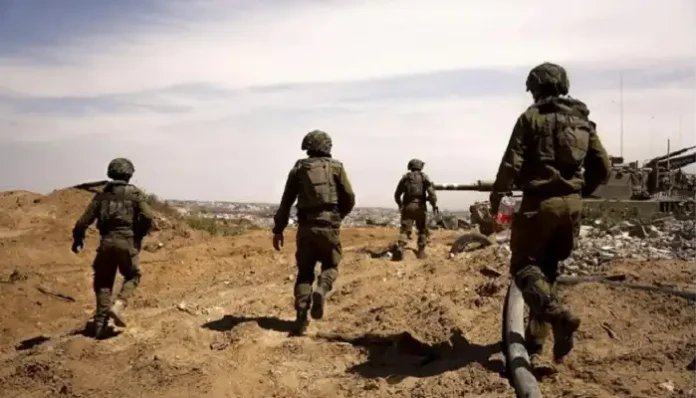DOHA — Efforts to secure a long-awaited ceasefire in Gaza have hit a major roadblock, as Israel reportedly refuses to withdraw its military forces from the Palestinian enclave—a key condition demanded by Hamas in ongoing negotiations.
According to sources familiar with the talks in Doha, discussions have grown increasingly strained since resuming on Sunday, July 6. While the world watches with growing anticipation and hope, peace remains elusive amid what one source described as “a complex deadlock.”
“The negotiations in Doha have suffered setbacks due to Israel’s insistence, as of Friday, on presenting what they call a troop withdrawal map,” the source told AFP. “But in reality, it’s more of a redeployment map, not a withdrawal.”
Occupation Repackaged?
The proposed Israeli plan reportedly seeks to maintain troop presence across over 40 percent of the Gaza Strip. Such a move, according to Palestinian sources, would effectively turn the southern part of Gaza—especially areas near Rafah and the Egyptian border—into an overcrowded humanitarian trap. Hundreds of thousands of Palestinians have already been forced to relocate to these zones under intense military pressure.
Another Palestinian source accused Israel of sending a delegation with no real negotiating power, hinting that the Israeli side may be deliberately stalling the process to prolong its military campaign.
“The Israeli delegation came without authority. Their goal seems to be obstructing a deal while continuing the aggression,” the source said.
U.S. Influence in the Shadows
The tension has prompted mediators to hit the pause button. Sources say talks have been temporarily suspended, awaiting the arrival of U.S. President Donald Trump’s special envoy, Steve Witkoff, in Doha. His role in unlocking the stalled negotiations remains uncertain.
One Hamas-aligned source was adamant in rejecting Israel’s map, calling it “a blueprint for reoccupation” and “a plan to cage Gaza.”
“This map legitimizes the occupation of half of Gaza and isolates the Strip, leaving Palestinians with no freedom of movement,” the source warned.
Stakes Are High — and Lives Hang in the Balance
Despite the deadlock, both Hamas and Israel have signaled a willingness to move forward—if their terms are met. Central to the deal is a potential 60-day ceasefire and the release of 10 Israeli hostages still held in Gaza.
A senior Israeli official hinted that a ceasefire could be within reach “within the week”—but only if Hamas agrees to the current proposal.
“If Hamas refuses, we will continue military operations in Gaza,” the official declared bluntly.
Israeli Prime Minister Benjamin Netanyahu has repeatedly stated that the Gaza offensive will not stop until Hamas is completely eliminated. Since the war reignited on October 7, 2023, Israeli bombardments have reportedly killed over 57,000 Palestinians—most of them women and children.
As international pressure mounts and civilian casualties continue to climb, the question remains: Will political posturing bury any chance of peace?
With Gaza already in ruins, hope flickers in Doha. But unless both sides find a way to bridge their differences—particularly over Israeli troop presence—the ceasefire will remain just out of reach.
Meanwhile, humanitarian groups warn that the continued blockade and bombardment have pushed Gaza’s healthcare system beyond collapse. Hospitals are operating without electricity, clean water, or sufficient medical supplies, as injured civilians—many of them children—flood emergency rooms.
Calls for an immediate humanitarian corridor have intensified. The United Nations, along with several non-aligned nations, have urged both Israel and Hamas to agree at least to a temporary truce that would allow food, medicine, and aid workers to reach those most in need.
On the ground, the suffering deepens. Displaced families live in makeshift shelters with limited access to basic necessities. Aid convoys are stalled at border crossings, waiting for political clearance that may never come. The sense of abandonment among Gaza’s civilians is growing by the day.
At the diplomatic level, frustration is mounting. Several Arab nations have condemned Israel’s refusal to commit to a full withdrawal as a violation of international humanitarian law. Meanwhile, Western allies remain divided—some backing Israel’s security concerns, while others push for a more balanced approach to end the bloodshed.


